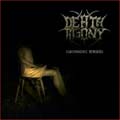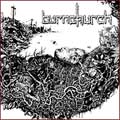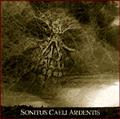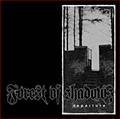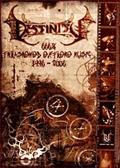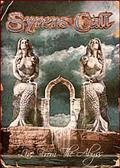#
# XML_node.objet
#
# This object is an XML node representation
#
# /- name (string)
# xml_node --- attributes (array)
# \- children (array) or value (string)
class xml_node {
var $name;
var $attributes = array();
var $children = array();
var $value = "";
function xml_node($name,$attributes,$children=array(),$value="") {
$this->name = $name;
if (is_array($attributes)) {
$this->attributes = $attributes;
}
$this->children = $children;
$this->value = $value;
}
}
#
# xml_tree class
#
# This object parses an XML stream and offers a tree composed by xml_nodes
#
class xml_tree {
var $xml_stream;
var $current_node;
var $root_node;
var $index;
var $value;
function xml_tree() {
$this->root_node = new xml_node("__ROOT_NODE",array());
$this->current_node = $this->root_node;
}
function add_tree($xml_stream) {
# Managing the parser
$this->xml_stream = $xml_stream;
$xml_parser = xml_parser_create();
xml_parser_set_option($xml_parser,XML_OPTION_CASE_FOLDING,0);
xml_parser_set_option($xml_parser,XML_OPTION_SKIP_WHITE,1);
if (!xml_parse_into_struct($xml_parser,$this->xml_stream,$this->value,$this->index)) {
xml_parser_free($xml_parser);
die("XML Parse error");
}
xml_parser_free($xml_parser);
# Now, $this->value and $this->index are informed, we can use the get_node methode.
$tab_result = $this->get_node(0,count($this->value) - 1);
$this->root_node->children[] = $tab_result[0];
$this->current_node = $this->root_node;
}
function get_node($index_start,$index_stop) {
#echo "
\n";
#echo "GET-NODE($index_start,$index_stop)
\n";
# What we are going to return is an array of xml_nodes
$return_tab = array();
# depth is only here to check if everything is all right
$tab_node = $this->value[$index_start];
$depth = $tab_node["level"]-1;
# Now we have to be sure we do not forget a single node
for ($index = $index_start;$index <= $index_stop;$index++) {
#echo "\$index = $index
";
# get the current node
$tab_node = $this->value[$index];
# what type of node is it ?
switch($tab_node["type"]) {
case "complete" :
# Depth integrity check
if ($tab_node["level"] != $depth+1) {
die("ERREUR # contrainte d'intégrité au noeud complet $index, niveau $depth + 1 au lieu de ".$tab_node["level"]);
}
#echo "Noeud complet trouvé position $index TAG ".$tab_node["tag"]."
\n";
# Easy one, no children to manage, only a value...
$return_tab[] = new xml_node($tab_node["tag"],$tab_node["attributes"],"",$tab_node["value"]);
break;
case "open" :
# Depth integrity check
if ($tab_node["level"] != $depth +1 ) {
die("ERREUR # contrainte d'intégrité au noeud ouvert $index, niveau $depth au lieu de ".$tab_node["level"]);
}
# Open tag, we re-use this methode to return its children
# Where is the correspondong close tag ?
$node_index = $this->index[$tab_node["tag"]];
$flipped_node_index = array_flip($node_index);
#echo "This ".$tab_node["tag"]." is at coords ".$flipped_node_index[$index]."
";
$i=1;
do {
$next_index = $node_index[$flipped_node_index[$index] + $i++];
$next_tag=$this->value[$next_index];
}
while ($next_tag["level"]!=$tab_node["level"]);
#echo "Ouverture de noeud détectée pos $index TAG ".$tab_node["tag"]."
\n Parcours jusqu au $next_index
\n";
# good, we can now instanciate our node
$return_tab[] = new xml_node($tab_node["tag"],$tab_node["attributes"],$this->get_node($index+1,$next_index),"");
# As we called the get_node methode, we are sure that nodes have been parsed to the corresponding close tag
$index = $next_index;
break;
case "close" :
# Depth integrity check
if ($tab_node["level"] != $depth ){
die("ERREUR # contrainte d'intégrité au noeud fermé $index, niveau $depth au lieu de ".$tab_node["level"]);
}
#echo "Fermeture de noeud detectée pos $index TAG ".$tab_node["tag"]."
\n";
# This ugly thing is useless because reaching a close tag means that $index==$index_stop but who knows ? =)
# it will be skipped soon
$index = $index_stop;
break;
default:
die("Erreur de type de TAG non déterminé :'".$tab_node["type"]."'");
}
}
# We are out ... returns the array with collected children...
return ($return_tab);
}
# this function browse the xml tree and set the current node to the selected node
function give_node($path) {
if ($path[0]=="/") {
$current_node=$this->root_node;
$path=substr($path,1);
#echo "ABSOLUTE PATH GIVEN=$path
";
}
else {
$current_node = $this->current_node;
}
#echo "PATH GIVEN=$path
";
$tab_path = split("/",$path);
foreach ($tab_path as $node_expr) {
#echo "STUDYING EXPR='$node_expr'
";
$node = $current_node;
$expr_tab = split("\?",$node_expr);
$node_name = $expr_tab[0];
$attr_tab = 0;
if (count($expr_tab)>1) {
##echo "TROUVE AU MOINS UNE CONDITION SUR LES ATTRIBUTS...
";
$attr_expr_tab=split(",",$expr_tab[1]);
$attr_tab=array();
foreach($attr_expr_tab as $attr_expr) {
$attr_split_expr=split("=",$attr_expr);
$attr_tab[$attr_split_expr[0]]=$attr_split_expr[1];
}
}
$last=0;
foreach ($node->children as $children) {
#echo "COMPARING WITH '$children->name'
";
if ($children->name == $node_name) {
##echo "TROUVE NOEUD CORRESPONDANT $node_name
";
if (is_array($attr_tab)) {
$node_attributes = $children->attributes;
foreach ($attr_tab as $key=>$value) {
if ($node_attributes[$key] == $value) {
#echo "ATTRIBUTE & CHANGE CURRENT NODE TO ".$children->name."
";
$current_node = $children;
$last = 1;
}
}
}
else {
##echo "CHILD=".$children->name."
";
#echo "CHANGE CURRENT NODE TO ".$children->name."
";
$current_node = $children;
$last=1;
}
}
if ($last) {
break;
}
}
if (!$last) {
#echo "PATH ERROR $node_name
";
#die("MMmmmh It seems that this file is not a DIA XML format...sorry...");
return 0;
}
}
return $current_node;
}
function browse_tree($path) {
$node = $this->give_node($path);
if (is_object($node)) {
$this->current_node = $node;
return 1;
}
return 0;
}
# this method dumps an html representation of the xml tree
function xml_show($node = "",$level=0,$last=0) {
if ($node=="") {
$node=$this->root_node;
}
if (!is_object($node)) {
die("ERROR : node is not an object");
}
$line="";
for($i=1;$i<=$level;$i++) {
if ((i==$level-1) and ($last)) {
$line.=" ";
}
else {
$line.=" |";
}
if ($i==$level) {
$line.="`-";
}
}
$line.=$node->name;
#echo $line;
$line.="".count($node->children)."";
if (count($node->children)==1) {
$line.=" (".$node->value.")
\n";
echo "$line";
}
else {
$line.="
\n";
echo "$line";
$i=1;
foreach($node->children as $children) {
if ($i==count($node->children)) {
$this->xml_show($children,$level+1,1);
}
else {
$this->xml_show($children,$level+1);
}
$i++;
}
}
}
#END_CLASS
}
STONE SOUR (usa) - Come What (Ever) May (2006)

Label : Roadrunner Records / Universal
Sortie du Scud : 31 juillet 2005
Pays : Etats-Unis
Genre : Metal
Type : Album
Playtime : 12 Titres - 49 Mins
STONE SOUR, pour ceux qui ne le savent pas est le groupe parallèle de Corey Taylor, le leader de SLIPKNOT. Attention, Il faut parler de groupe à part entière et non de projet annexe pour ne pas fâcher le frontman ! Et donc quelques années après (4) et quelques dizaines de milliers d’albums vendus (principalement aux Etats-Unis et en Grande Bretagne) voici que le bonhomme sort son second album avec STONESOUR : Come What (Ever) May. Accompagné de Jim Root (guitare SLIPKNOT), Roy Mayorga (Batterie SEPULTURA) Josh Rand (Guitare) et Shawn Economaki (Basse), l’album compte 12 titres pour une durée d’un peu moins de 50 minutes.
Aux premières écoutes, ce qui est frappant, c'est que cet album est taillé pour le marché outre atlantique. Les titres durent en moyenne 3 à 4 minutes soit la durée idéale pour passer en radio ! Les mélodies sont accrocheuses, avec un chant clair et des guitares saturées qui s'énervent un peu lors des refrains. Bien sûr Come What (Ever) May possède ses ballades pour les fêtes de fin d’année des campus américain, ballades dignes de NICKELBACK, dont les mélodies sont faciles (« Sillyworld ») et parfois plates (« Zzyzx Rd. »).
L’album contient différentes couleurs, différentes émotions, mais dans l’ensemble, Come What (Ever) May sonne très Rock, et même Pop/Rock (« Come What (Ever) May » la chanson !). On est très loin de la brutalité et de la folie de SLIPKNOT ! Seuls les morceaux « 30/30 - 150 » avec son intro et son riff super accrocheur, « Hell & Consequences » et « 1st Person » s’en approchent un peu. Lors de la composition de cet album, Corey Taylor s’est inculqué un code moral comme la casuistique pour l’écriture de chaque morceaux. Il cherche à résoudre les problèmes posés par une action concrète au moyen de principes généraux et de l'étude des cas similaires. Ses textes traitent donc autant de sujets personnels toujours rapportés à des situations similaires qui se sont déjà déroulés : une sorte de jugement de sa conscience personnelle.
Pratiquement assuré de son succès, le groupe a eu les moyens de ses ambitions avec comme producteur Nick Raskulinecz (FOO FIGHTERS, QUEEN OF THE STONE AGE…) et le mixage assuré par Randy Staub (METALLICA, NICKELBACK…) sont forcement de qualité. Aucun détail n’est laissé au hasard, et les morceaux sont peaufinés jusqu’à la moindre note. Come What (Ever) May a été enregistré au 606 Studio, le studio perso de Dave Grohl ! On peut seulement déplorer le manque de cohérence des titres, car mis à part le son compact et homogène, l’ensemble est un peu déroutant et trop calme, mais les 2 ou 3 hits présents sur l’opus vont le sauver de la masse !
Ajouté : Vendredi 06 Octobre 2006
Chroniqueur : Warloghe
Score :   
Lien en relation: Stone Sour Website
Hits: 13651
|





